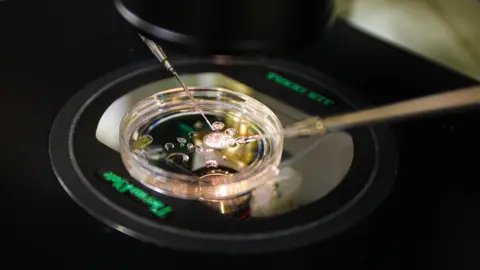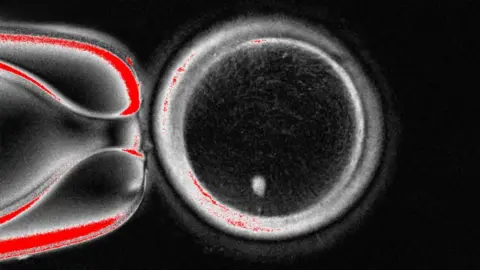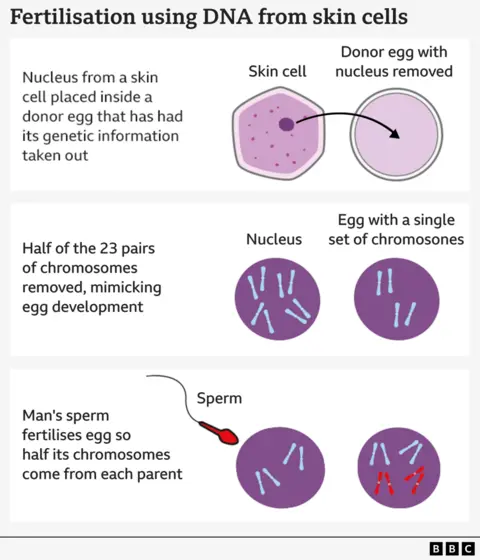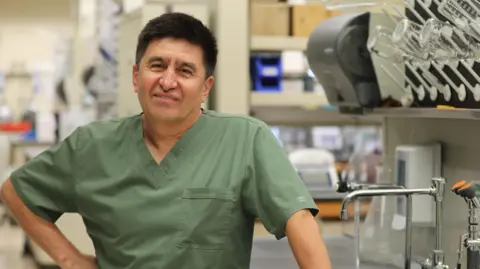World News
China sentences 11 members of Ming mafia family to death

A Chinese court has sentenced to death 11 members of a notorious family that ran scam centres in Myanmar, according to Chinese state media.
Dozens of members of the Ming family were found guilty of conducting criminal activities, with many receiving lengthy jail sentences.
The Ming family worked for one of the four clans that ran Myanmar’s sleepy backwater town of Laukkai, close to the border with China, and turned it into a hub for gambling, drugs and scam centres.
Myanmar eventually cracked down, arresting many members of these families in 2023 and handing them over to Chinese authorities.
A total of 39 Ming family members were sentenced on Monday in the eastern city of Wenzhou, according to a report by Chinese state broadcaster CCTV.
Besides the 11 members who received death sentences, another five received death sentences with two-year suspensions; 11 were jailed for life; and the rest were given jail sentences ranging from five to 24 years.
The court found that since 2015 the Ming family and other criminal groups had engaged in criminal activities including telecommunications fraud, illegal casinos, drug trafficking, and prostitution.
Their gambling and scam activities had generated more than 10bn yuan ($1.4bn; £1bn), according to the court.
Others had previously estimated that the casinos of each of the four families were processing several billion dollars every year.
The court also found that the Ming family and other criminal groups were responsible for the deaths of several scam centre workers, including shooting workers in one incident to prevent them from returning to China.
Initially developed to take advantage of Chinese demand for gambling, which is illegal in China and many other neighbouring countries, Laukkaing’s casinos evolved into a lucrative front for money laundering, trafficking, and dozens of scam centres.
It was seen as the engine-room of what the UN has dubbed the “scamdemic”, which has seen more than 100,000 foreign nationals, many of them Chinese, being lured to scam centres where they are effectively imprisoned and forced to work long hours, running sophisticated online fraud operations targeting victims all over the world.
The Ming family were once one of the most powerful in Myanmar’s Shan State, and ran scam centres in Laukkai which held at least 10,000 workers. The most notorious was a compound known as Crouching Tiger Villa, where workers were routinely beaten and tortured.
Then, two years ago, an alliance of insurgent groups launched an offensive which drove the Myanmar military out of large areas of Shan State, and took control of Laukkai. China, which holds significant influence over these groups, was assumed to have given the offensive a green light.
Ming Xuechang, the family patriarch, reportedly killed himself; other family members were handed over to the Chinese authorities. Some have made remorseful confessions.
Thousands of those working in the scam centres have also been handed over to the Chinese police.
With these sentences China is signalling its determination to deal harshly with the scam business on its border. Pressure from Beijing also forced Thailand to take action against scam centres along its border with Myanmar earlier this year.
Despite this the business has adapted, with much of it now operating in Cambodia, though it is still prevalent in Myanmar.
www.bbc.com
World News
Human skin DNA fertilised to make embryo for first time

James GallagherHealth and science correspondent
 OHSU/Christine Torres Hicks
OHSU/Christine Torres HicksUS scientists have, for the first time, made early-stage human embryos by manipulating DNA taken from people’s skin cells and then fertilising it with sperm.
The technique could overcome infertility due to old age or disease, by using almost any cell in the body as the starting point for life.
It could even allow same-sex couples to have a genetically related child.
The method requires significant refinement – which could take a decade – before a fertility clinic could even consider using it.
Experts said it was an impressive breakthrough, but there needed to be an open discussion with the public about what science was making possible.
Reproduction used to be a simple story of man’s sperm meets woman’s egg. They fuse to make an embryo, and nine months later a baby is born.
Now scientists are changing the rules. This latest experiment starts with human skin.
The Oregon Health and Science University research team’s technique takes the nucleus – which houses a copy of the entire genetic code needed to build the body – out of a skin cell.
This is then placed inside a donor egg that has been stripped of its genetic instructions.
So far, the technique is like the one used to create Dolly the Sheep – the world’s first cloned mammal – born back in 1996.
 OHSU
OHSUHowever, this egg is not ready to be fertilised by sperm as it already contains a full suite of chromosomes.
You inherit 23 of these bundles of DNA from each of your parents for a total of 46, which the egg already has.
So the next stage is to persuade the egg to discard half of its chromosomes in a process the researchers have termed “mitomeiosis” (the word is a fusion of mitosis and meiosis, the two ways cells divide).

The study, published in the journal Nature Communications, showed 82 functional eggs were made. These were fertilised with sperm and some progressed onto the early stages of embryos development. None were developed beyond the six-day-stage.
“We achieved something that was thought to be impossible,” said Prof Shoukhrat Mitalipov, the director of the Oregon Health and Science University’s centre for embryonic cell and gene therapy.
The technique is far from polished as the egg randomly chooses which chromosomes to discard. It needs to end up with one of each of the 23 types to prevent disease, but ends up with two of some and none of others.
There is also a poor success rate (around 9%) and the chromosomes miss an important process where they rearrange their DNA, called crossing over.
Prof Mitalipov, a world-renowned pioneer in the field, told me: “We have to perfect it.
“Eventually, I think that’s where the future will go because there are more and more patients that cannot have children.”
 OHSU/Christine Torres Hicks
OHSU/Christine Torres HicksThis technology is part of a growing field aiming to make sperm and eggs outside of the body, known as in vitro gametogenesis.
The approach is still at the level of scientific discovery rather than clinical use, but the vision is to help couples who cannot benefit from IVF (in vitro fertilisation) because they don’t have the sperm or eggs to use.
It could help older women who no longer have viable eggs, men who don’t produce enough sperm or people whose cancer treatment has left them infertile.
The field also re-writes the rules of parenthood. The technique described today does not have to use a woman’s skin cells – it could also use a man’s.
That opens the door to same-sex couples having children that are genetically related to both partners. For example, in a male same-sex couple, one man’s skin could be used to make the egg and a male partner’s sperm used to fertilise it.
“In addition to offering hope for millions of people with infertility due to lack of eggs or sperm, this method would allow for the possibility of same-sex couples to have a child genetically related to both partners,” said Prof Paula Amato, from Oregon Health and Science University.
Build public trust
Roger Sturmey, a professor of reproductive medicine at the University of Hull, said the science was “important” and “impressive”.
He added: “At the same time, such research reinforces the importance of continued open dialogue with the public about new advances in reproductive research.
“Breakthroughs such as this impress upon us the need for robust governance, to ensure accountability and build public trust.”
Prof Richard Anderson, deputy director of MRC Centre for reproductive health at the University of Edinburgh, said the ability to generate new eggs “would be a major advance”.
He said: “There will be very important safety concerns but this study is a step towards helping many women have their own genetic children.”
www.bbc.com
World News
Princess Anne visits Ukraine to support child war victims

The Princess Royal made a surprise visit to Ukraine on Tuesday to highlight the “traumatic experiences of children living on the frontline of the conflict”, Buckingham Palace has said.
Princess Anne left a toy bear at a memorial for children killed since Russia’s full-scale invasion, and spoke to young people alleged to have been taken from their homes by Russian forces.
She also discussed the UK’s support for Ukraine and its ongoing resistance with President Volodomyr Zelensky.
The official visit, taken at the request of the Foreign Office, comes just weeks after her nephew Prince Harry visited war-wounded veterans during a surprise visit to Kyiv.
Anne, who is the King’s sister, paid her respects at the Children’s Memorial alongside First Lady Olena Zelenska, who opened the site in the northeastern city of Kharkiv.
The princess also visited the Child Rights Protection Centre, set up during the conflict to support young people affected by the war, where she spoke to children who had been reunited with their families and staff “working tirelessly” to bring more young people back.
Kyiv estimates that at least 19,500 Ukrainian children have been deported and forcibly displaced from their homes to Russia and Russian-occupied territories since February 2022.
Just 1,605 have come home so far, according to the government’s Children of War database.
The International Criminal Court issued an arrest warrant for Rusian President Vladimir Putin and his Children’s Rights Commissioner, Maria Lvova-Belova, in 2023 for the alleged unlawful deportation of children.
Russia denies the accusation and says it has protected children by moving them from a war zone for their safety.
Anne’s visit comes weeks after the UK announced new sanctions targeting those supporting the alleged attempts “to forcibly deport and indoctrinate” Ukrainian children.
The princess also met female police and armed forces officers working to protect women and children, spoke to injured veterans and those with “conflict-related trauma” at a rehabilitation centre, and toured St Sophia’s Cathedral in Kyiv.
She also visited the Kherson Cultural Exhibition, which tells the story of the southern city recaptured by Ukrainian forces in November 2022 and described by the Palace as “a symbol of Ukraine’s strength, resistance and struggle”.
It is the second visit by a Royal to the country in less than a month, after the Duke of Sussex visited Kyiv in mid-September.
Other Royals have likewise shown support for Ukraine since the war began more than three years ago – including the King, who welcomed Zelensky to his Sandringham estate in Norfolk in March.
He also raised the conflict during US President Donald Trump’s recent state visit to the UK, saying: “Today, as tyranny once again threatens Europe, we and our allies stand together in support of Ukraine, to deter aggression and secure peace.”
The Prince of Wales met Ukrainian refugees during a two-day visit to Estonia in March – where he said their resilience was “amazing”.

www.bbc.com
World News
Hollywood celebrities outraged over new ‘AI actor’ Tilly Norwood

 Getty Images
Getty ImagesAn “AI actor” named Tilly Norwood has been causing a stir after its Dutch creators said the synthetic performer is in talks with talent agencies.
Norwood could be mistaken for a young, aspiring actress when one glances at its social media. The brunette poses for photos and showcases a fully AI-generated comedy sketch, where it is described as having “girl next door vibes.”
“I may be AI, but I’m feeling very real emotions right now,” Tilly’s creators wrote on her page. “I am so excited for what’s coming next!”
Hollywood is not rolling out the red carpet. Its powerful actors union has condemned the creation, along with A-list stars like Emily Blunt, Natasha Lyonne and Whoopi Goldberg.
Norwood “is not an actor, it’s a character generated by a computer program that was trained on the work of countless professional performers,” the Screen Actors Guild-American Federation of Television and Radio Artists, or SAG-AFTRA, said in a statement.
“It has no life experience to draw from, no emotion and, from what we’ve seen, audiences aren’t interested in watching computer-generated content untethered from the human experience,” the union said.
The AI actor was created by Dutch actor and comedian Eline Van der Velden who reportedly said she wanted Norwood to become the “next Scarlett Johansson”. The BBC has reached out to Van der Velden and her company, Particle6.
Norwood’s Instagram page includes headshots from faux filming tests and an advertisement spoofing programs on the BBC, including being superimposed on the often-star-studded couch on BBC’s The Graham Norton Show.
Amid the anger and backlash in Hollywood, the Dutch creator posted on Tilly’s Instagram page to say that the creation is “not a replacement for a human being, but a creative work – a piece of art”.
“Creating Tilly has been, for me, an act of imagination and craftmanship, not unlike drawing a character, writing a role or shaping a performance,” Van der Velden wrote, adding such creations should be judged “as part of their own genre” rather than compared to human actors.
 Reuters
ReutersAI has been a hotly contested technology in Hollywood and was a key sticking point during labour strikes that shut down the industry two years ago as writers and actors demanded protections from the technology.
In its statement on Norwood, SAG-AFTRA reminded agencies and studios that using Norwood in projects could pose issues for contractual protections they secured after the 2023 strike.
“It doesn’t solve any ‘problem’ — it creates the problem of using stolen performances to put actors out of work, jeopardizing performer livelihoods and devaluing human artistry,” the union said.
Actress and filmmaker Natasha Lyonne, known for her leading roles in Poker Face, Orange Is the New Black and Russian Doll, said anyone who works with Norwood should be boycotted.
“Any talent agency that engages in this should be boycotted by all guilds,” said Lyonne, who is currently working with “ethical AI” to create a feature film that stars real actors.
“Deeply misguided & totally disturbed.”
Fellow actress Emily Blunt, speaking on a podcast with Variety, said the creation was terrifying.
“That’s an AI? Good Lord, we’re screwed,” The Oscar-nominated actress said when shown a video of Norwood. “That is really, really scary, Come on, agencies, don’t do that. Please stop. Please stop taking away our human connection.”
On the US chat show The View, comedian and actress Whoopi Goldberg said audiences can tell the difference between humans and synthetic performers. She was sceptical over concerns that AI creations would steal jobs from human actors because they “move differently, our faces move differently, our bodies move differently”.
While Norwood’s Instagram has been active for months, her existence gained notoriety in Hollywood this week after trade publication Deadline reported on a summit her creator presented at in Zurich over the weekend.
Van der Velden discussed her AI production studio and her new AI talent agency – Xicoia – on Saturday, according to Deadline, and suggested that Hollywood studios and agencies were embracing AI under the radar.
She told the crowd they should expect public announcements about high-profile projects using the technology in the coming months.
www.bbc.com
-

 Tech3 days ago
Tech3 days agoPaid, the AI agent ‘results-based billing’ startup from Manny Medina, raises huge $21M seed
-

 Sports5 days ago
Sports5 days agoBrentford v Man Utd Predicted Starting Lineups for Premier League Match Amid Mainoo Update
-
Relationship5 days ago
Signs of A Yoruba Man In Love
-
Relationship5 days ago
How Do Nigerian Men Treat American Women
-

 Tech5 days ago
Tech5 days agoElectronic Arts will reportedly be acquired for $50B
-
Relationship2 days ago
What You Need Before Getting Married In Nigeria
-

 Sports18 hours ago
Sports18 hours ago20 Worst Players in Ryder Cup History By Win Percentage [Ranked]
-
Relationship5 days ago
Gen Zs And Dating Millennials






